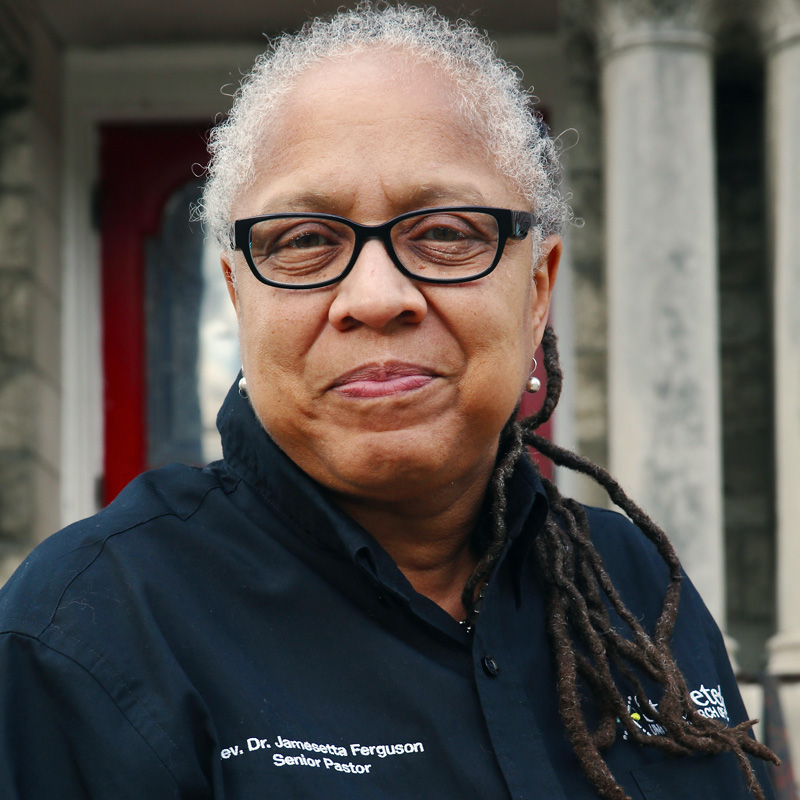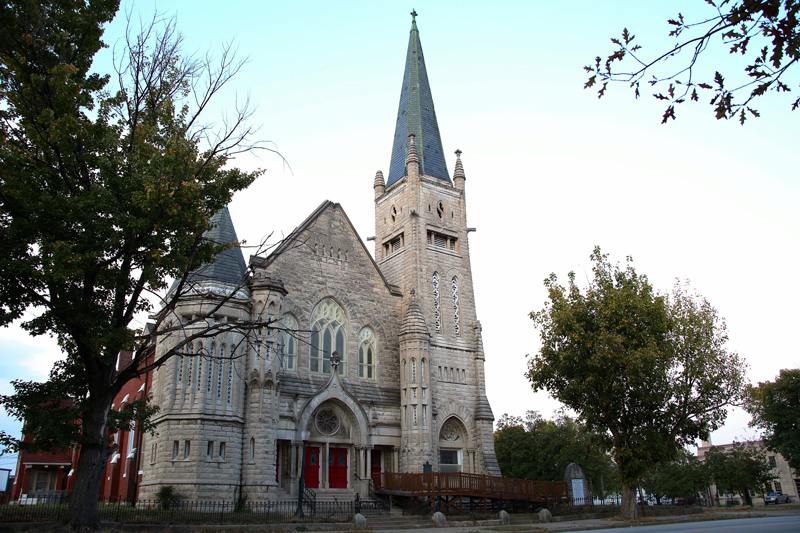
Rev. Jamesetta Ferguson’s leadership has helped St. Peter’s United Church of Christ gain momentum.
There is the economy, and there is the economy of God, the Rev. Dr. Patrick Duggan says. As far as the latter system is concerned, he can’t imagine that its primary shareholder is pleased with the church.
“The economy of God is not just about dollars or money: It’s about the order of all creation, and how it should work together for the benefit of all creation and the glory of God,” he says. “Money doesn’t have a soul. It’s what you do with it, and how you deploy it.”
For that reason, Duggan says, churches have been resting on their laurels — and their buildings and endowments — for far too long. As executive director of the United Church of Christ Church Building & Loan Fund, the oldest institution of its kind in the United States, Duggan is on a mission to reset the moral compass of ministry — and restore churches in the process.
“All the assets that we as churches own should be invested to advance the Gospel imperatives Jesus talked about — ending poverty, restoring justice. Investment policies that have social impact,” Duggan says. “We’re already good at charity. Now, churches have to become self-sustaining social enterprises.
For examples, he points to congregations in Kentucky and Hawaii, where CB&LF has helped two churches leverage their assets in creative, mission-minded ways.
Repurposing with Purpose
Functional fixedness. It’s the inability to conceptualize an object’s utility beyond its designated use, and it inhibits countless possibilities. Duggan wants churches to overcome the fixed-use fallacy when it comes to the church building itself — an especially pertinent point for churches that don’t sit atop robust endowments.
“Not every church has an endowment, but most have a commercial kitchen, for example, or one that can be a commercial kitchen for a few thousand dollars,” he says. “That commercial kitchen could launch local food businesses. It could be an incubator for a local enterprise. You can do a community food program — any number of things that either generate revenue or directly impact the quality of food and the access to food in your community.”
In Pearl City, Hawaii, the ministry of Kahikuonalani UCC was attuned to the needs of the community. The church, with the help of the CB&LF, was able to leverage readily available space to house the Keiki Care Center of Hawaii, which provides sorely needed daycare.
And while lots of churches rent space to day care centers, Duggan says, the difference was how the church used the revenue.
“The church deployed revenue from the daycare rent to finance the rebuilding of the entire church building — including several revenue-generating spaces,” Duggan says. “What the church understands is that the childcare center serves a social purpose; it’s a practical use of the building; and it creates revenue to help the church."
The key takeaway: Many congregations occupy spaces rich with possibility — but church leaders have to take it upon themselves to seek the uses out.
And like seeking new ways to market a candle in the age of light bulbs, panicked congregations that tout uninspired solutions only speed up their decline. Duggan suggests a simple start for ministries to embrace mission: introspection.
“Ask, ‘What are we about? What should we be about?’ It’s about getting ready to fully embrace that,” he says. “You have to find the clarity of mind to say we can make a difference.”
Duggan reminds that in the 1970s churches led the movement for socially responsible investing, or the then-radical notion that church funds must stand against investment counter to the moral and social values of ministry. That investment practice is par for the course now.
“Socially responsible investing is a fine floor. But it shouldn’t be the ceiling,” Duggan says.

The renovation and reutilization of the St. Peter’s property will better the congregation and surrounding community.
A Visionary Village
Such was the case in Louisville, where CB&LF encouraged the Westside congregation of St. Peter’s United Church of Christ to dream bigger and reinvent itself — much like the fast-evolving neighborhood the church on the cusp of downtown occupied.
As a Partners in Vision project, CB&LF’s work with St. Peter’s reaches for an astonishing concept: to proactively meet the needs of Louisville’s underserved population. CB&LF’s relationships, including a partnership with AIM Development Group, based in the Bronx, New York, have been key.
AIM consultant Sandra Acosta says that the project began when the small but growing congregation of St. Peter’s reached out to CB&LF. After membership plummeted to single digits, the church gradually rebounded over the past few years under the leadership of the Rev. Jamesetta Ferguson. Looking to maintain momentum, St. Peter’s applied for a $1 million church renovation loan.
“We realized there was no way CB&LF could lend this money and think it could be repaid based on the small but growing membership,” Acosta says. “However, when we went out there, we realized that they owned a whole block, and there could be some opportunity based on the location.”
Ferguson was also keenly involved in Louisville’s urban renewal movement, Acosta notes, which had been gaining steam as economic expansion chipped away at the traditional boundary between west and east Louisville. And the writing on the wall was already there: The area of the church would be next in the fold of an expanding central business district.
So Acosta problem-solved. She convinced the church to scrap costly renovations, move its location to a strip mall one block west (a move that helped membership numbers) and commit to develop a church-owned block adjacent to the sanctuary that would complement a city-planned mixed-income, mixed-use development.
At a cost of about $8 million, 50 percent from CB&LF, the two-story retail and office building called The Villages at West Jefferson was born.
The property will not only host businesses that better the community but will yield rental income that will fund the rehabilitation and maintenance of St. Peter’s original church building, with remaining funds going to church programming. The church is a historical landmark dating to the 1890s, with 1950s renovations that weathered time more poorly than the original German-built structure.
CB&LF enlisted Justine PETERSEN, a lending and credit-building organization, to ensure that families with low and moderate incomes will gain the financial assets and acumen needed to ride the community’s impending wave of economic opportunity, rather than be drowned by it.
The organization does one-on-one counseling with its clients, helping them to boost their biggest assets — their credit scores. The service is an enormous antidote to the cycle of predatory pay-day loans, which prey on people who do not qualify for inexpensive lending.
The organization’s CEO Robert Boyle says the PETERSEN partnership is part of the overall ingenuity of the CB&LF’s Louisville investment.
“Faith-based investing is in its infancy, and there are lots of faith-based investors, but in my experience, there’s never been as focused an approach such as the one that CB&LF has entered into with us,” he says. “I can’t overstate how brilliant a model it is, and it’s one, I think, for future faith-based investments — I hope it is meaningful in that way.”
There is also a practical incentive for churches to embrace a fundamental paradigm shift toward approaching assets, Duggan says: Assets that advance mission increase credibility and relevance for flailing churches. Self-preservation through selflessness.
However Duggan’s appeal to morality might be the most powerful argument for change: Churches must reject complicity with hoarding wealth, and embody their roles as stewards in God’s economy.
“Churches cannot be neutral when it comes to money. You’re either helping the new order emerge, or you are perpetuating an unjust status quo."
